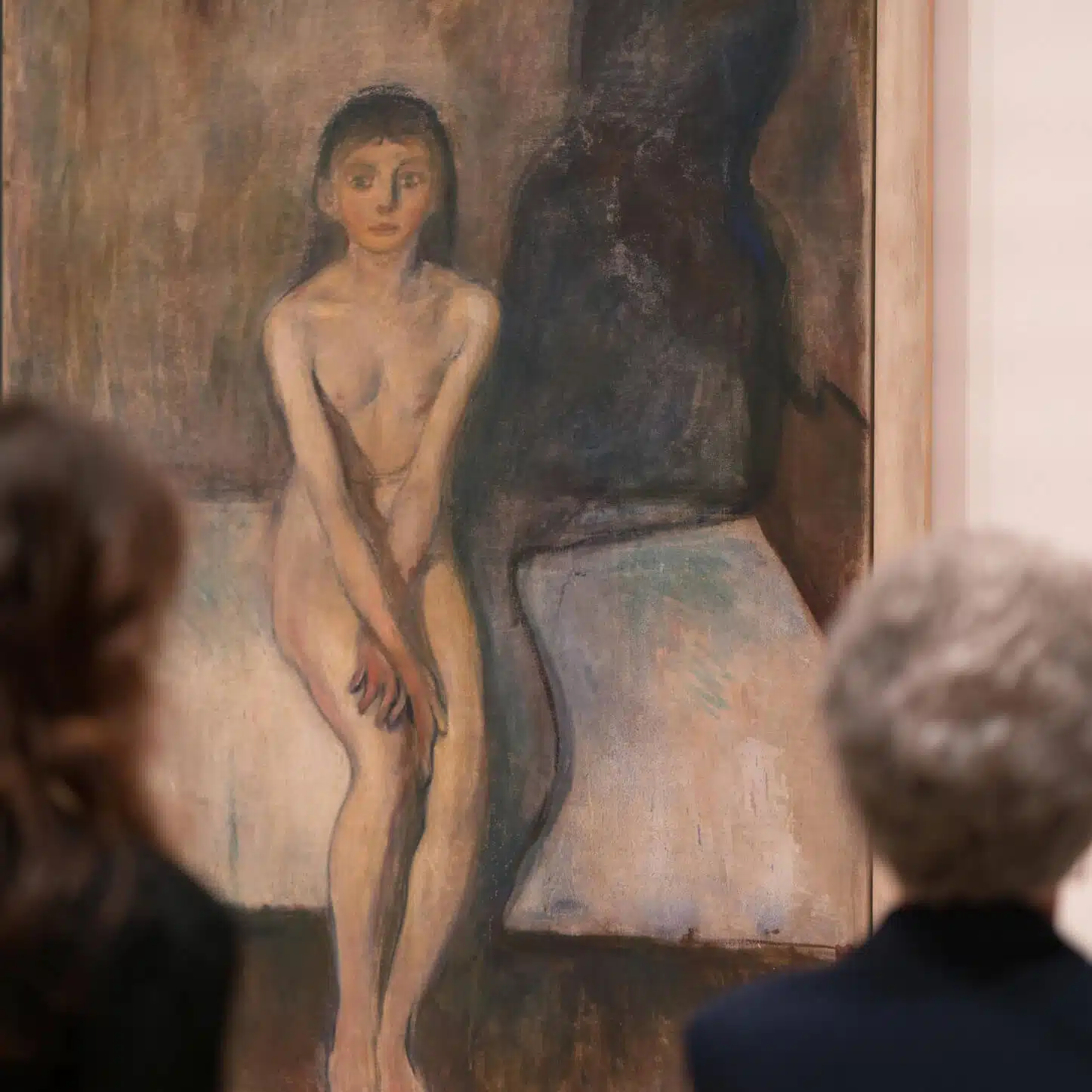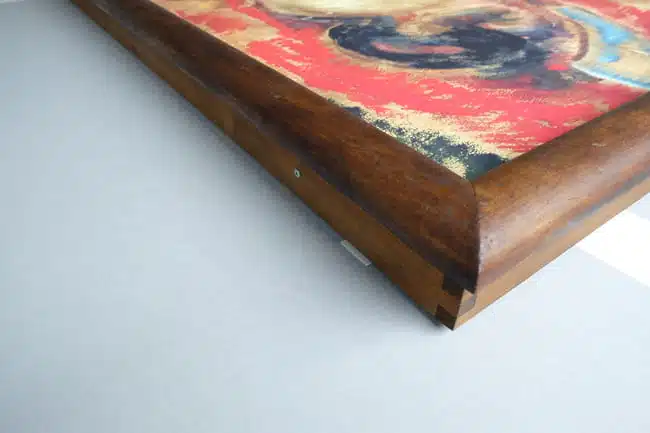HALBE & WERNER MURRER FRAMES equip Munch Museum in Oslo
When the construction of the new museum at the harbour in Oslo began, the Munch Museum asked itself the initial question about the new framing of Edvard Munch's artworks: "How would Edvard Munch frame his pictures?". Werner Murrer was consulted for the answer. In the course of time, the joint project with HALBE was developed.














It was important to develop reconstructions of original artist's frames of Edvard Munch, as well as to find the historically correct framing in the sense of the artist and for the picture. WERNER MURRER RAHMEN, one of the best frame makers in Germany, has specialized in historical frames for a good 25 years. In cooperation with HALBE-frames, an intelligent frame solution was to be created that would be historically correct and meet all conservation requirements.


Prototype inner frame from HALBE (left) & contemporary wooden frame from WERNER MURRER RAHMEN (right)
The temporal classification of art
"At the beginning, of course, is the temporal classification of the picture. Only then can I select the appropriate frame according to the time. We are concerned with historically correct solutions. You have to put a lot of research into it," explains Mr. Murrer. After intensive research it turned out that Edvard Munch liked the framing of his pictures mostly white or brown, simple and round. It was even possible to locate some original frames in Edvard Munch's summer studio in Asgardstrand, which confirmed this.


Comparison of old and new framing (left), original Edvard Munch frame (right)
Intelligent and secure framing solution
In order to present the important works safely and securely to the world, a special framing solution was developed. The core task of HALBE was to create a stable inner frame that would permanently hold and protect the picture - from contact, harmful UV rays, dust and, of course, theft. In addition, it had to meet the highest conservation requirements and allow for easy hanging. This interior frame, specially designed for the Munch Museum, was then covered by an authentic contemporary frame from WERNER MURRER RAHMEN. In this way, the technology inside remains hidden from the viewer and also gives the artwork the "right frame" visually.


The "right framing" in terms of both technology and appearance
A completely new type of frame
This framing solution convinced the Munchmuseet in a large international tender. The result is a completely new picture frame, in which the magnetic frame principle from HALBE has been transferred to the framing of paintings for the first time and further developed. As usual with HALBE, handling is particularly simple: the painting can be inserted from the front in comparison to conventional framing. This is particularly interesting for restorers. Nevertheless, in order to protect against unauthorized access, the frame has various security features to prevent unauthorized removal and opening.
The magnetic frame from HALBE forms the basic framework (inner frame) and fulfils all functions for secure, theft-protected suspension. The frame also fulfils all conservation requirements (no wood inside / all materials Oddy tested, large distance between painting and glass, shatterproof glazing with high UV protection) and is particularly convenient. Particularly practical for restorers, in addition to the quick and safe framing, is that the frame is also quickly accessible from the back through removable back panels. These are transparent and thus also allow a rough visual inspection.


Secure & stable suspension (left), as well as removable back panels (right)
All frames are equipped with Optium Museum Acrylic from Tru Vue. This means that even works up to almost 1800 x 3000 mm can be glazed. The anti-reflective coating allows a clear, undistorted view of the work, while at the same time providing high break resistance and low weight.
The aluminium profile frame is magnetically pressed onto the basic element and secured against unauthorised removal with picture locks. The historical wooden frame from WERNER MURRER RAHMEN is then placed on top of this (as the last step after hanging), which is also secured against theft.
The special feature is that each frame is individually adapted for each work. The depth, height and width of the frame are adjusted to the millimetre. From small formats of approx. 400 x 500 mm to currently over 1600 x 2200 mm. Even larger framings are planned as well as further optical design possibilities.
Safe from relative humidity
The frame corresponds to a very special variant of the Distance magnetic frame, but some have been additionally equipped with the function of the PROTECT magnetic frame. For the painting "Puberty" - a major work by Edvard Munch - the frame, which in its basic version does not include any buffering of relative humidity, was supplemented with this feature. The passive buffering technology of the frame thus ensures constant relative humidity, so that the conditions inside the frame are independent of the outside climate. This is particularly essential for transport and lending. This function was also the reason why "Puberty" was allowed to travel overseas and will be exhibited for the first time in the USA. Until October 9, the loan from Oslo is on view at the San Francisco Museum of Modern Art. From November, the exhibition will be shown in New York and from May 2018 in Oslo.